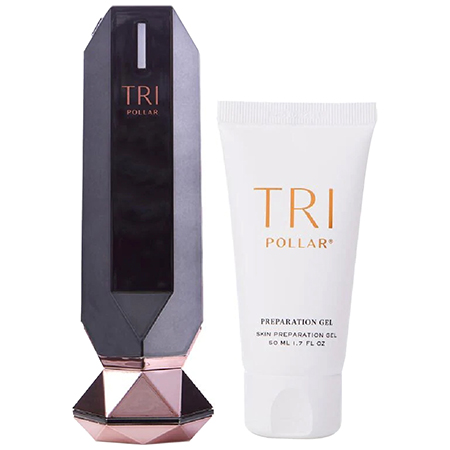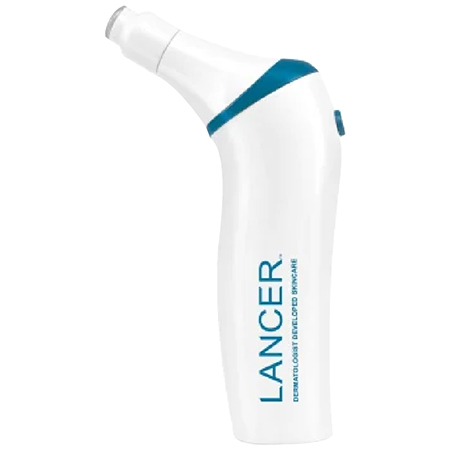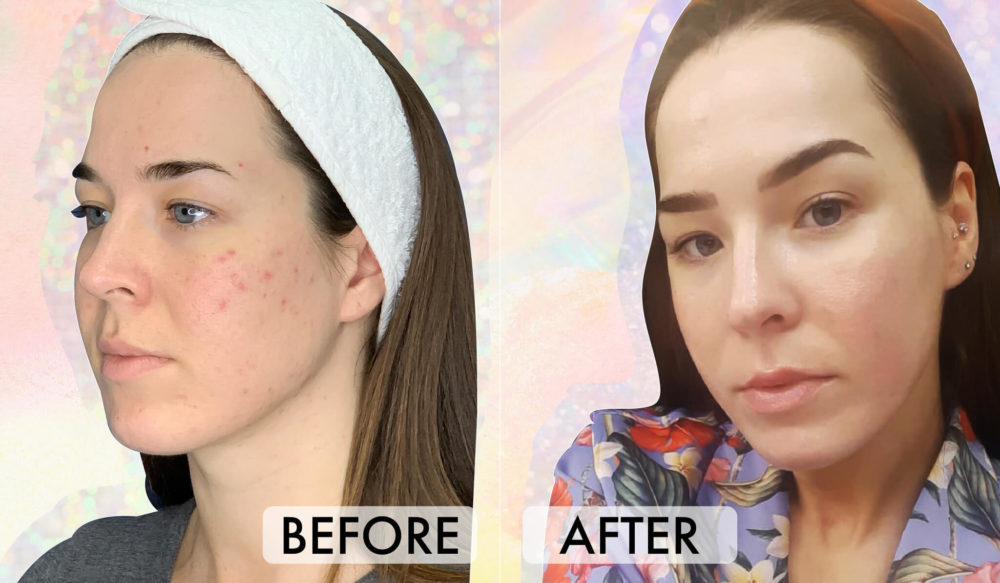Techy Skincare Devices That'll Save You So Much Future Money
 via Giphy
via Giphy
Our collective obsession with skincare shows no sign of slowing down. With a distinct sort of giddiness, many of us will eagerly throw down some serious dough for the newest beauty loot, and there are countless websites and social media channels dedicated entirely to the art of getting happy skin. To that end, a recent poll found that the “average woman” spends roughly $300 per month toward skincare and makeup, which translates to a whopping $225K over the course of a lifetime. Wowza!
Skincare gadgets, in particular, are an area of the beauty market enjoying some major momentum. Some experts speculate that the increased interest is in part due to the pandemic, which prompted people to try buzzy skincare tech in the comfort of their homes in lieu of in-office procedures. Another contributing factor is that at-home devices are simply getting better. And in the long run, they can actually save you money on in-office treatments thanks to their preventative nature.
“The technology of these devices is improving, much as tech is becoming more sophisticated in all aspects of our lives,” notes Dr. George Bitar, a board-certified plastic surgeon in Washington, D.C. “Essentially, manufacturers have done their best to mimic devices and aesthetic outcomes that are typically performed in a plastic surgeon or dermatologist’s office. Devices are smaller, they can deliver higher frequencies of light and wavelengths.”
While in-office procedures do offer a bit more bang and a more controlled environment, there’s no denying the convenience – and enticing results – that at-home beauty tech offers. And in many cases, these devices act as a viable tool for maintenance between office visits.
If you’ve considered trying an at-home skincare gadget but aren’t sure which technology is best for your concerns and beauty goals, keep reading.
Skin Concern #1: Acne
Acne is one of the most confounding skincare concerns to tackle. Some people respond well to oral medications, others to topical products, some to lifestyle shifts, and many to a combination of all the above. If you’re still struggling to try something that clears up your acne, certain at-home skincare gadgets might be a good option.
1. Blue Light Devices
“To address breakouts, I recommend using blue light LED therapy,” says Dr. Michael Horn, a board-certified plastic surgeon in Chicago. “LED stands for Light Emitting Diodes, and it uses different wavelengths to address varying skin concerns, including acne. Blue light works by penetrating the skin and killing acne-causing bacteria.”
 Source: Omnilux and QuasarMD™
Source: Omnilux and QuasarMD™
Try it: The Omnilux CLEAR™, $395, which is a flexible silicone mask that emits blue light via LED, or the QuasarMD™ Quasar MD Blue Acne Treatment, $370, a handheld LED light therapy device.
2. Deep Cleansing Gadgets
A deep but gentle clean is important for skin health no matter your skin type. It’s especially helpful if you have oily or acne-prone skin. Dr. Horn says, “Regular use of a gentle cleansing brush helps exfoliate the top layer of dead skin and improves absorption of topical products. I stress the word gentle because scrubbing the skin with an abrasive brush can actually spread bacteria and increase breakouts.”
 Source: FOREO
Source: FOREO
Try it: Created for sensitive skin, the FOREO LUNA™ 3 for Sensitive Skin, $199, uses sonic pulsations to gently and thoroughly remove oil, dirt, and dead skin cells.
Skin Concern #2: Laxity
As we get older, our skin starts to lose firmness. The clock ticks on, but today we have access to at-home beauty tech that can help minimize laxity.
1. Microcurrent Devices
“Microcurrent technology was first used in the 1980s as a treatment to stimulate muscles in people with conditions such as Bell’s Palsy. Once the results were seen in its ability to provide lift to the face, the aesthetic industry followed suit,” says Dr. Bitar.
He explains that microcurrent devices deliver low doses of electric currents, which “work out” muscles to help tone them. At-home devices have lower levels of these currents compared to in-office treatments, but can still be effective if used consistently.
 Source: NuFACE
Source: NuFACE
Try it: NuFACE Trinity Facial Toning Device, $339: A compact handheld device that stimulates the larger surface areas of your face and neck via microcurrents.
2. Radiofrequency Tools
Also known as RF, radio frequency is a highly popular in-office treatment. The technology has now expanded to include safe, at-home devices. “RF works by heating the skin to induce collagen remodeling as well as skin tightening,” says Dr. Horn. “At-home devices are now using this same technology to stimulate collagen production and tone the skin. Being consistent is the key to getting results.”
 Source: TriPollar
Source: TriPollar
Try it: TriPollar STOP Vx, $454: Delivers RF energy into the skin’s dermis layer to help build collagen and repair elastin.
Posts You'll Love:
Skin Concern #3: Fine Lines and Wrinkles
At some point or another, we all deal with fine lines and wrinkles. Many in-office treatments can address these issues, as can topically applied ingredients such as retinol, peptides, and ceramides. Red light therapy is another option to consider.
1. Red Light Therapy
“One of my favorite at–home technologies for the skin is the LED mask,” says Dr. Horn.“I recommend using red LED, which addresses fine lines and wrinkles as well as skin tone and texture. I love the lighter silicone masks which contour easily to your face.”
 Source: PRIORI
Source: PRIORI
Try it: PRIORI Unveiled LED Mask, $429: A lightweight silicone mask that minimizes fine lines, brightens skin tone, and improves texture.
Skin Concern #4: Hyperpigmentation
Hyperpigmentation can be tricky to address on your own, and sometimes using the wrong device can actually increase pigmentation. Most experts recommend going into the office for deep peels or laser treatments (IPL or BBL), which can address discoloration safely and effectively. That said, you do have options at home.
1. Microdermabrasion Tools
“For hyperpigmentation, I recommend at-home microdermabrasion tools,” says Dr. Horn. “I think they work well when paired with a pigment lightening cream or serum. When used once or twice weekly this device exfoliates the skin giving a more even tone.”
 Source: Lancer Skincare
Source: Lancer Skincare
Try it: Lancer Skincare Pro Polish Microdermabrasion Device, $200: A handheld device that features a diamond tip to gently buff away superficial layers of skin. It also features vacuum technology to suck up gunk.
Have you ever invested in a skincare gadget? What was it, and what were your results like? Let’s discuss below!
Disclaimer: Every product we review has been independently selected and tested without bias by our editorial team. Although some brands allow affiliate links, we never take payment to review products, so we may earn a commission if you purchase a product by clicking on one of our links.























Leave a comment